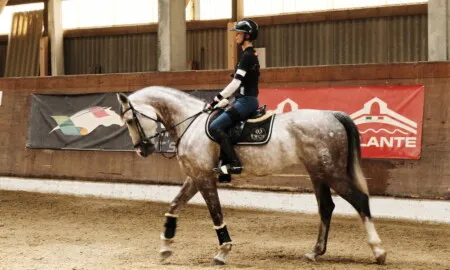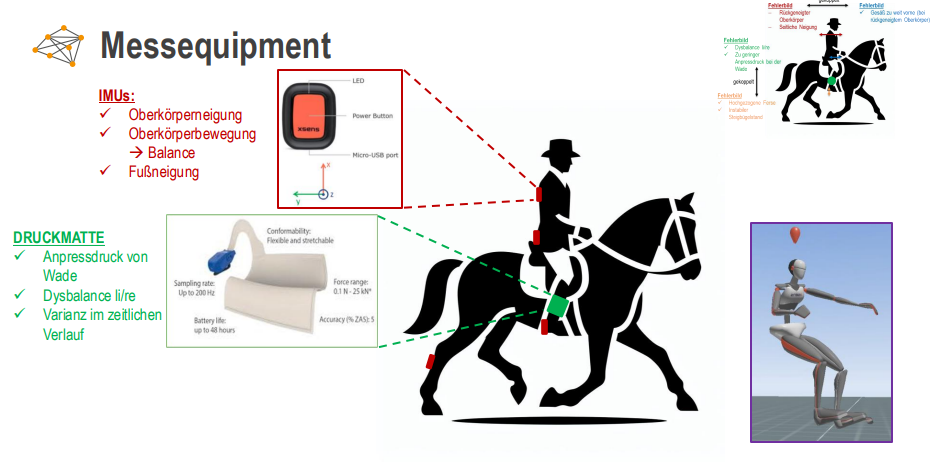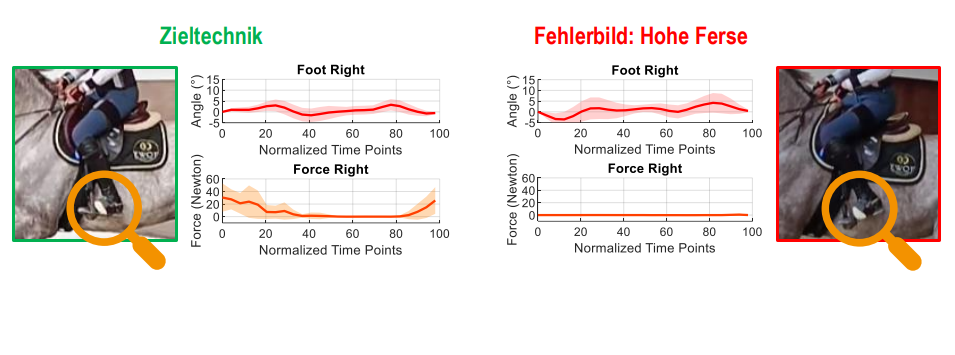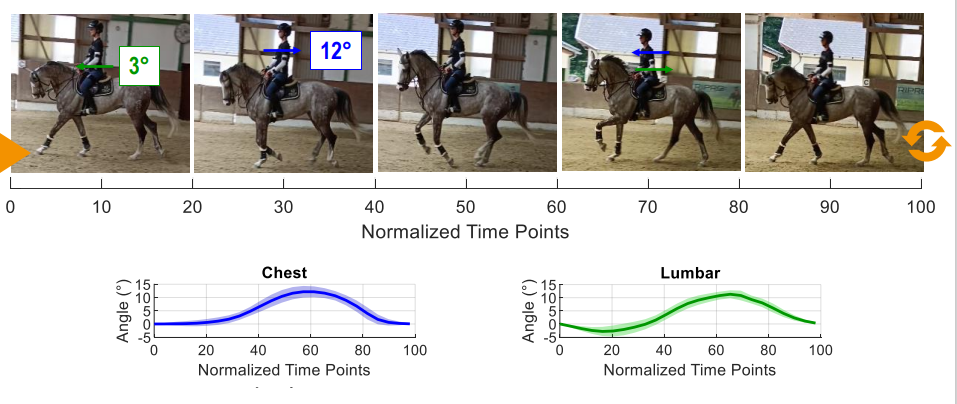Customer: EWOT Academy
CiMo Partner: Salzburg Research Forschungsgesellschaft mbH
Challenge
Riding relies on a finely tuned interaction between rider and horse, where movement, pressure and balance play a central role. A key factor in this interaction – the pressure exerted by the rider’s lower legs on the horse – is currently poorly captured. Existing systems such as EquiSense, peiker-CEE and EquiLab inadequately capture critical aspects such as the precise pressure distribution, detailed movement patterns and the rider’s balance. This gap prevents sustainable improvement in riding skills, as mistakes in technique can easily be repeated without the guidance of a trainer, especially when training is irregular. Continuous performance recording with real-time feedback would enable riders to improve their skills independently and avoid repetitive mistakes. The need for a system that supports continuous monitoring and provides actionable insights is therefore crucial for the further development of training in the equestrian community.

Methods
To solve the problem of incorrectly capturing the critical rider-horse interaction, a comprehensive solution was developed combining advanced sensor technology and data analytics. The process began with a thorough literature review and expert interviews to identify common riding posture errors, providing a foundation for understanding key areas for improvement. A measurement concept was then developed using cutting-edge technologies including Xsense Awinda Motion Capture, XSens Dot Inertial Measurement Units (IMUs) and Novel Loadpad sensors to accurately capture pressure distribution and movement patterns.
Field testing of the sensor setup confirmed its effectiveness in real-world riding scenarios, leading to a proof-of-concept study evaluating intra-individual differences between optimal and inaccurate riding postures. Particular attention was paid to common errors such as a backwards leaning torso, sideways lean, low calf pressure and raised heels. This study enabled precise data collection on rider performance.
Once the data was collected, it underwent rigorous processing, including curation, segmentation, and time normalization, to ensure accuracy and reliability.
The result of the analysis shows that the defined driving positions can be distinguished with the sensors used based on their characteristic shape of acceleration/pressure and more. The sensors are therefore able to collect data to identify the driving positions. In summary, the results form a basis for the development of a feedback system.

Result
An innovative measurement system with a simple sensor setup – consisting of inertial measurement units (IMUs) and pressure mats – has provided insights into the sensor setup (positioning, number, type, measurement size) for the development of a feedback system. This solution effectively closes the gap in monitoring rider-horse interactions, especially in assessing individual differences in riding posture. It detects error patterns such as rear lean, side lean, low calf pressure and raised heels and provides a clear analysis that distinguishes between targeted techniques and common errors.
The proof of concept has shown that this minimal sensor setup can identify incorrect postures that are crucial for skill improvement, giving riders precise feedback on their technique. For example, posture differences between left and right turns are quantified, revealing directional errors that affect performance.
The system gives young riders the opportunity to independently identify and correct errors, thus promoting their confidence and sustainable improvement. Previously riders had to rely on their coaches, now they can access real-time data to make instant adjustments.
For EDIH, the enhanced digital capabilities enable comprehensive data collection and analysis, which form the basis for tailored training and equipment design. This technology-enabled approach fits seamlessly into traditional training and marks a fundamental shift in rider skill development and promotes a data-driven coaching methodology.

